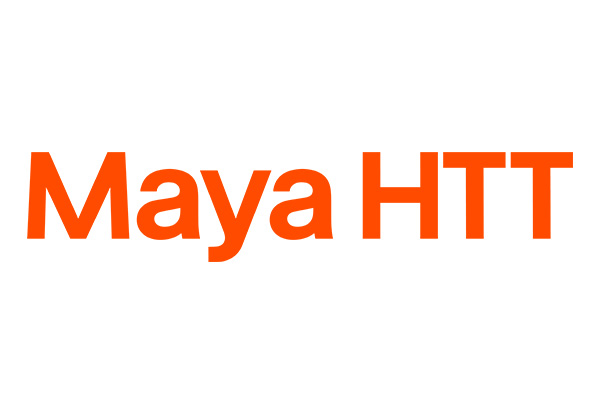Launching small satellites with big benefits
Hybrid engine tech delivers competitive and agile access to space
Reaction Dynamics (RDX) has been pursuing innovative research into rocket propulsion for 5 years. Having solved the problems inherent to hybrid rocket engines, the company, headed by CEO Bachar Elzein, elected to offer dedicated launches to orbit for small satellites. They promise faster, cheaper, and more reliable access to space.
Challenges
Miniaturization of electronics has had a dramatic effect on the design of satellites. New generations of smallsats are not just “small,” they are mini, micro, nano and pico, with the smallest (so far) weighing in at under 1 kg.
The practical applications are abundant, and demand has grown in response. However, getting Lilliputian satellites into orbit presents a challenge of disproportionate size: hitching a ride on a large rocket is neither quick nor easy. Wait times might be as long as two years, and ridesharing comes with limitations beyond delays: low control over the final destination.
Solutions
Getting small satellites into space in a timely, affordable, and dedicated manner requires a new approach. Reaction Dynamics has developed a breakthrough launch technology that provides the means towards an ecofriendly launch solution. Leveraging its ecofriendly hybrid rocket engines, the company’s launch technology will pave the way towards green, clean access to Earth’s Orbit at a fraction of currently available prices.
Simcenter, an integrated end-to-end solution from Siemens Digital Industries Software, has been a key element of the company’s successful design and manufacturing strategy. Simcenter gave Reaction Dynamics the tools to take on a large part of the design and manufacturing of the rockets, with an eye to templatized design and light customization.
Some adaptations are possible, for example with customized payload adapters and fairings, but the rocket designs are, for the most part, the same because repetition of manufacturing helps to keep costs low.
With Simcenter, the team gained a good understanding of the design aspect and where they needed sensitive analysis. Elzein says of Simcenter that “it is particularly good for optimizing. Its seamless, frictionless CAD-CAM integration helped reduce development cycle time and costs and was one of the main reasons we chose the software.” In addition to its dedicated microlauncher, the company is now designing its own launch infrastructures, relying heavily on Simcenter’s features.
Benefits
Elzein credits Simcenter with helping the team learn, iterate, and improve designs quickly. A side benefit of the software’s features and the additive manufacturing process is that it removes a lot of needless complexity, yielding robust, low part-count designs.
“Simcenter’s composites modeling, and analysis was key because it helped us optimize and have a high level of confidence, allowing us to focus on the critical aspects of the design.”
As Reaction Dynamics sets its sights on its prototype suborbital launches scheduled for the near future, the team is also looking toward how the company will scale efficiently. Simcenter token licensing offers the flexibility and responsiveness to have more people designing at the same time, so Reaction Dynamics can scale with the same agility they seek to offer their own customers.
Simcenter helps Reaction Dynamics offer a combination of price, safety, reliability, and fast launch services unmatched by competitors. Just as importantly, it gives them the tools to rapidly scale to meet the growing small satellite launch market demand.
“When time came to select a software suite to support the scale-up of Reaction Dynamics, the quality of the support and the versatility of Siemens’ suite of industry software made it a clear winner. The integration of so many features within the SimCenter platform means that scaling our simulation capabilities as required becomes efficient and realistic, allowing us to step comfortably into simulations to get the confidence that our designs will respect the applicable norms. Furthermore, the quality of the support received whenever small issues popped up was always great and timely. We know that we can count on the team at Maya HTT to guide and help us through the deployment and adaptation to these new and powerful tools, making us obtain results faster.”
– Maxime Goulet-Bourdon –Test and Launch Lead
“For design and analysis, Siemens Simcenter 3D Structures is the best option for us, as it enables seamless transition from CAD to simulation, by streamlining the process of simplifying and cleaning up complex design models to prepare the analysis models. This can help accelerate the design process greatly, during which hundreds of iterations can be necessary. Multiple add-on modules, such as the Laminate Composite module, are also available, enabling us to quickly grow our capabilities, when necessary, without having to go through the lengthy process of transitioning toward a new software solution. Being integrated inside the Siemens platform, it also gives us flexibility in our usage, by enabling the creation of an ecosystem where all of our software needs, from CAD to PLM, and including a wide range of simulation tools, are fulfilled by a single platform. For a startup, this ability of the platform to grow with us is of great importance when choosing the best solution.”
– Christophe Leclerc, Structural Design Lead
“NX is a powerful tool that helps us create complex products easily. It has all the modeling features that we need and it helps us make what we envision a reality. Its interface is intuitive and easily picked up by anyone with a 3D modeling background. The various applications are also seamlessly integrated to organize the entire product development, from design to simulation to manufacturing, while being flexible enough to adapt to our own workflow.”
– Miguel Gagnon, Multiphysics & Flight Dynamics Lead
To learn more, visit https://www.mayahtt.com/






